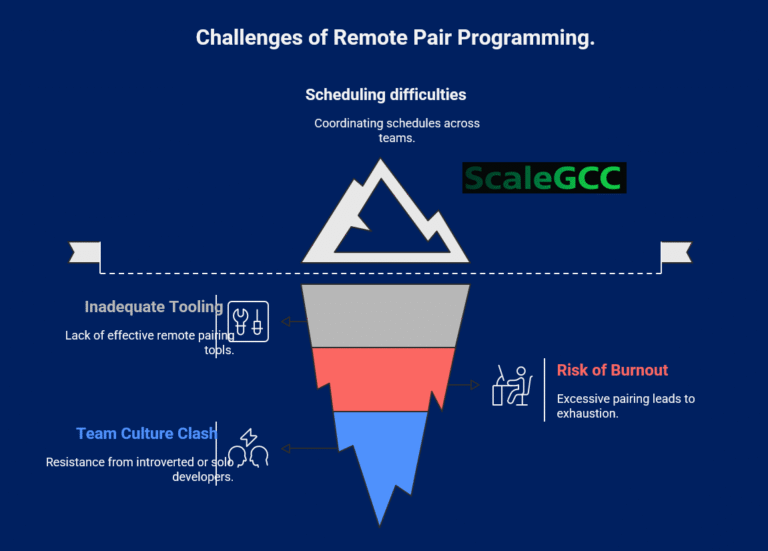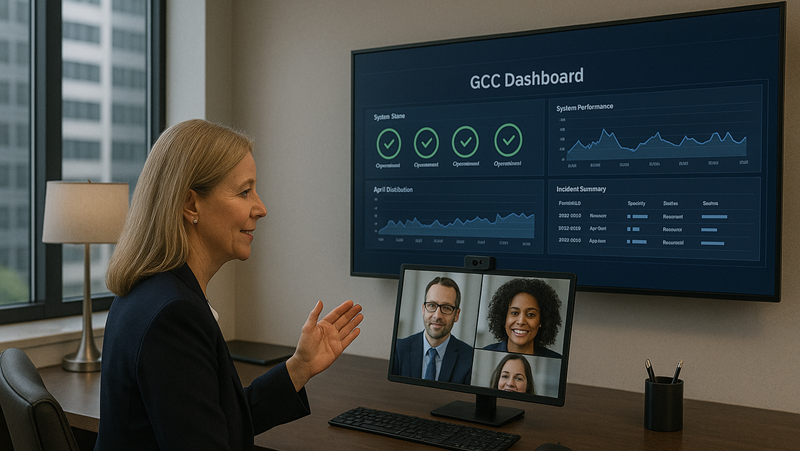Now Reading: Is Pair Programming a Dead Practice in Modern Teams?
-
01
Is Pair Programming a Dead Practice in Modern Teams?
- Home
- Technologies
- Is Pair Programming a Dead Practice in Modern Teams?
Is Pair Programming a Dead Practice in Modern Teams?
ScaleGCC Editorial TeamTechnologies2 months ago630 Views

Is Pair Programming a Dead Practice or Smart Collaboration or Costly Distraction? Let’s Get Real.
Walk into any modern software team, and you’ll likely hear the term pair programming tossed around. Some swear by it. Others roll their eyes. So what’s the truth?
Pair programming isn’t just about two developers sharing a desk or screen. At its best, it’s about two minds solving one problem together, creating better code, learning faster, and avoiding landmines early on. But if it feels forced or misaligned, it can quickly become exhausting, inefficient, or even counterproductive. This article unpacks the real-world value of pair programming, why it’s adopted, where it often fails, and how to make it actually work for your team.
So, What Is Pair Programming, Really?
Think of pair programming as a live coding jam session. Two developers, one keyboard (or shared screen):
One is the driver – typing, coding, hands on the keyboard.
The other is the navigator – reviewing, asking questions, spotting issues, thinking about the bigger picture.
Pair Program - Why So Many Companies Use It
It’s not just a Silicon Valley fad. Teams across the world, from startups to Fortune 500s, use pair programming and for good reasons.
1. Code That’s Cleaner, Smarter, and Safer – Two heads really are better than one when it comes to spotting bugs, poor naming, or architecture problems early on. You catch stuff before it hits QA (or worse, production).
2. Faster Onboarding and Learning – New developers pick up tribal knowledge fast coding standards, architecture decisions, and how things work, not just what’s written in the wiki.
3. More Eyes = Less Risk – No one becomes the “only person who knows that module.” Pairing helps distribute knowledge naturally. Teams are less vulnerable when someone’s out or leaves.
4. Teamwork Becomes Second Nature – It breaks silos. Devs talk more, understand each other better, and often build lasting trust. That has a ripple effect across projects.
5. It Keeps You Focused – When you’re pairing, you can’t just wander off to check Slack or scroll Twitter. People tend to stay on task when someone else is sitting right next to them (or on the call).
But Let’s Be Honest - Pair Programming Doesn’t Always Work
Despite the buzz, pair programming isn’t some kind of silver bullet for all your development problems. Like any collaborative technique, it’s only as good as the context, the people, and the way it’s applied. And in real-world teams, it doesn’t always go as smoothly as the playbooks suggest.
Here’s why many teams find it challenging:
1. Mismatch in Skill or Experience: Pairing works best when both developers feel they’re contributing equally. But when one is significantly more experienced than the other, the dynamic can skew. The junior developer may feel like a passive observer, too intimidated to ask questions or contribute ideas. Meanwhile, the senior may get impatient or feel like they’re babysitting.
In theory, it should be a great learning opportunity. In practice, it can turn into a one-sided lecture if there’s no intentional effort to include, encourage, and create a safe space for learning.
2. Some People Just Don’t Click: Let’s be real: chemistry matters. Not every developer will naturally collaborate well with every other team member. Differences in work pace, communication styles, patience levels, or even energy levels can cause friction.
One person might prefer to talk through every idea before writing a line of code, while the other just wants to dive in and experiment. That tension can lead to awkward silences, micro-conflicts, or general discomfort—none of which are helpful for writing good code.
3. It’s Mentally Tiring: Pair programming is cognitively intense. You’re not just writing code, you’re constantly thinking aloud, listening, explaining your decisions, and staying aligned with someone else’s thought process. For introverts or deep-focus developers, this can feel draining after a while.
Even for social developers, pairing for hours without a break can lead to mental fatigue, decision fatigue, and a dip in performance. Like anything intense, it needs to be paced.
4. It Can Feel Slower (At Least at First): From a pure efficiency standpoint, pairing can seem counterintuitive. Why put two developers on one task when they could be completing two separate ones?
To managers focused on short-term output metrics, it might feel like a productivity hit. And in some cases, especially with simple or routine tasks, it probably is. The payoff comes in quality, fewer bugs, and long-term knowledge transfer. But that return isn’t always immediately obvious or measurable, which makes it a harder sell.
5. If It’s Forced, It Fails: This is the killer. If pair programming is something teams are told they must do without clarity, without context, and without flexibility, it almost always falls flat.
“Because Agile says so” is not a good enough reason. Developers need to understand why they’re pairing, when it’s appropriate, and what success looks like. If it feels like a mechanical requirement rather than a thoughtful choice, it becomes just another checkbox activity and eventually gets ignored or resented.
Common Real-World Challenges
So… Is It Worth It?
In the right situations? Absolutely.
It’s great for:
Tackling tricky bugs or design problems
Onboarding new hires
Working on critical code that can’t afford to fail
Spreading knowledge across the team
Keeping quality high under pressure
But it doesn’t need to be 8 hours a day, every day. You can
and should use it selectively.
Tips to Make Pair Programming Work
Want to avoid the common pitfalls? Here’s what helps:
- Don’t overdo it: 1–2 hours a day is plenty.
- Switch roles regularly: driver/navigator rotation keeps it fresh.
- Let people opt in/out: not everyone needs to pair all the time.
- Use it intentionally: don’t pair just to pair. Use it for design discussions, hard refactors, or reviewing critical changes.
- Invest in tools: good screensharing, fast keyboards, and minimal friction make a big difference.
- Give people space – pairing is valuable, but solo deep work is too.
Final Thoughts: It’s Not About the Keyboard
At its heart, pair programming is about collaboration. It’s not about who’s typing, it’s about how two people think, solve problems, and learn together. Done right, it’s one of the best ways to grow developers, write better software, and build stronger teams. But done wrong or pushed blindly, it’s just a frustrating ritual. So start small. Pair when it makes sense. And if it’s working? Keep going. If it’s not? Adjust. That’s how great teams evolve.
Stay Informed With the Latest & Most Important News
Previous Post
Next Post
Interesting Read
Tools3 months ago
GCC Location Feasibility Assessment Tool
Tools1 month ago
Tech Skills Readiness Analyzer
Tools3 months ago
GCC Setup Costs - TCO & ROI Calculator
Tools6 days ago
GCC Vendor Evaluation Framework














